03:57
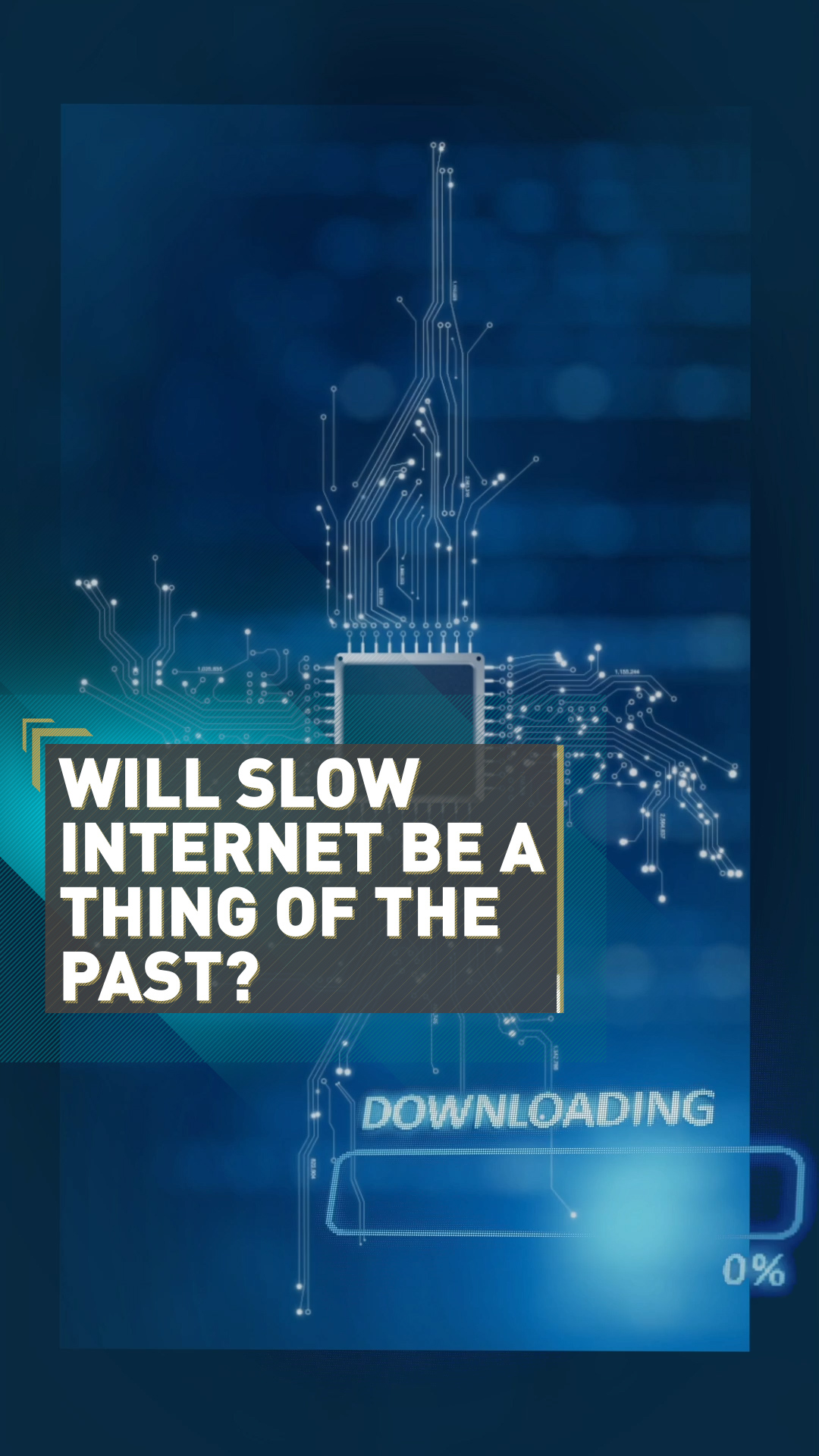
For many of us, it's difficult to imagine life without the internet. It's how I was able to write this article, and how you're reading it right now at the same time as other people in different parts of the world.
Although the internet has been around for a long time now – with the first workable prototype, known as ARPANET, launched in the late 1960s, and the first email sent in 1971 – it was only in the last two decades that technological advances took the internet to new heights and speeds with the advent of broadband.
Today, developments including 5G, fiberoptic broadband, the Internet of Things (IoT) and GFast fiber broadband are improving the efficiency of our daily lives and the ease and convenience with which we can use the internet for work, studies, or just entertainment, without the stress of a slow connection.
But it doesn't stop there, this is just what is available commercially, but scientists are continuing to develop internet speeds in research labs that would make slow internet a thing of the past.
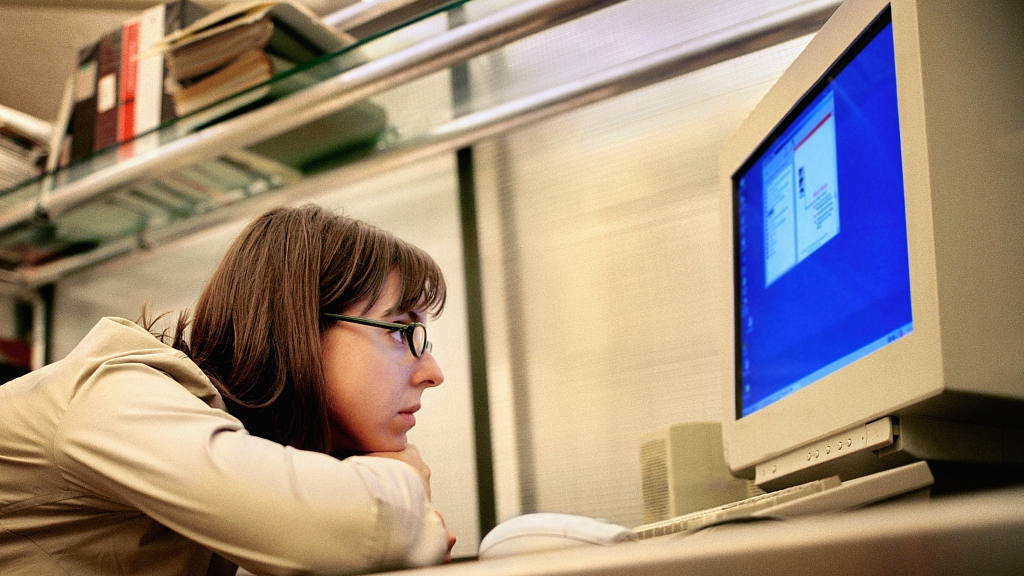
With the development of new technologies at an increasingly fast rate, we may no longer have to struggle with slow internet. /David Sacks/Getty via VCG
With the development of new technologies at an increasingly fast rate, we may no longer have to struggle with slow internet. /David Sacks/Getty via VCG
Record-breaking internet speeds
Last month, research engineers from the UK's University College London (UCL) achieved the world's fastest data transmission rate with an internet speed a fifth faster than the previous record held by a team in Japan.
"We transmitted data over optical fibers at the speed of 178 terabits per second (Tbps)," Polina Bayvel, who led the research team of scientists from UCL's Electronic and Electrical Engineering Department, told CGTN Europe.
That's a superfast 178,000,000 megabits per second (Mbps), a speed at which the researchers say it would be possible to download the entire Netflix library in less than a few seconds, or at most a couple of minutes.
To put that into perspective, Bayvel, who is a professor of optical communications and networks said: "The average internet speeds in the UK have increased, and Ofcom, which is the [communications] regulator in the UK, [is] saying the speeds have increased this year to an average of 60 Mbps, so that's 60 million bits per second. Our result is 178 terabits per second, so that's 30 million times faster."
Although these developments have not yet reached the commercial stage at which we, as consumers, can start using these speeds, the internet has come a long way in the past couple of decades.
In case you missed it:
• Should I worry about my name?
• Chip maker ARM's sale to Nvidia 'risks U.S. curbs on exports to China'
• Dublin museum dismantles whale skeleton after more than a century
How much has changed?
For several years since the first internet connection in the world was developed in the late 1960s, in the form of ARPANET, a system of computer communication was created by the US Department of Defence for government research, it was predominantly used by governments and scientists.
By the early 1990s, email started being used by ordinary people and the internet was rising in popularity, furthered by the invention of the World Wide Web by British computer scientist Tim Berners-Lee in 1991. His Hypertext Transfer Protocol (HTTP) and the web address (URL) are concepts familiar to most, if not all of us today.
With the invention of the World Wide Web came the commercialization of the internet and access to it was sold to consumers through its first iteration, known as "dial-up." You may be familiar with the cacophony of digital scratches and high-pitched beeps it made as you connected to the internet.
As well as the slow speeds of this internet connection – the best connection users could hope for was only 56 Kbps (0.056 Mbps) – dial-up internet was also not very convenient. It required a phone line to operate, so you couldn't make a phone call using a landline while you were using the internet, and vice-versa.
At this speed, downloading a file was an excruciating task: it would have taken more than three days to download a 1GB file, which today takes less than a minute. And forget doing anything more complicated than downloading a file, watching YouTube videos would not have even been possible.
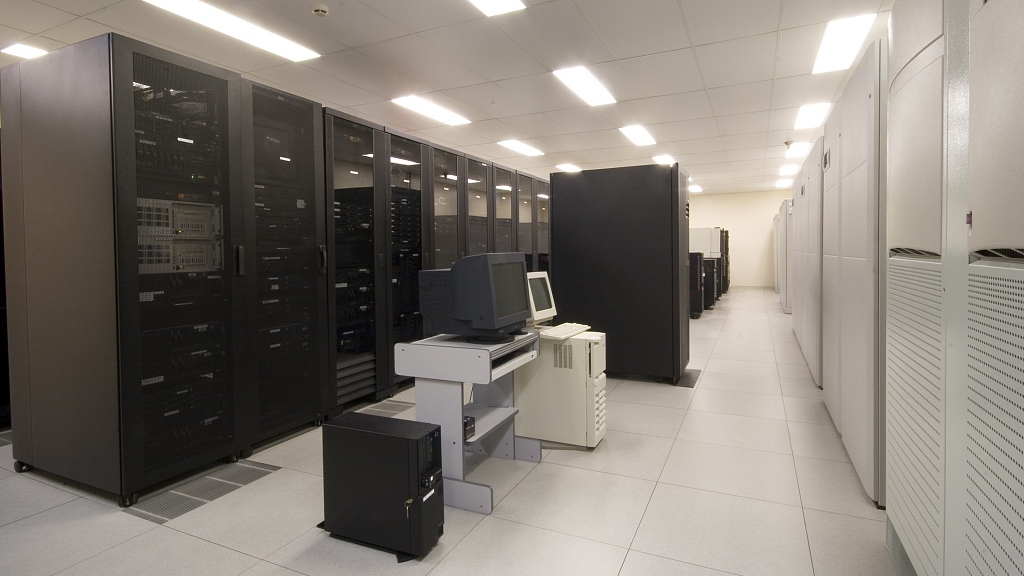
Internet speeds during the time of dial-up connections were very slow in comparison with speeds reached today. /felixR|Felix Alim/Getty via VCG
Internet speeds during the time of dial-up connections were very slow in comparison with speeds reached today. /felixR|Felix Alim/Getty via VCG
While many people had access to dial-up internet in their homes, it was only with the advent of broadband and wireless connection that the internet became more convenient in the early 2000s. Broadband allowed for a much higher volume of data to be transferred at much faster speeds by using an ADSL (Asymmetric Digital Subscriber Line) connection, making browsing the internet and downloading files much smoother.
Download speeds gradually increased over the years from single-digit Mbps in the first decade of the 2000s, to double-digit Mbps speeds in the mid-2000s, with a global average connection of 25 Mbps in 2015, according to networking hardware company Cisco Systems.
Alongside this development, there was another advance that made the internet more accessible – mobile broadband, or connecting to the internet through a mobile phone. Mobile internet had been around for some time, but connection speeds were much lower than fixed broadband, with the first smartphones making do with a slow 9.6Kbps connection. Speeds improved with the development of 2G in 1991, 3G in 2003 and then 4G technology in 2010 when speeds reached 15Mbps.
Mobile internet meant more and more people were going online and using the internet as smartphones were becoming cheaper and more accessible. Together with fixed broadband use, these developments meant the number of people using the internet increased dramatically since the start of the century to today.
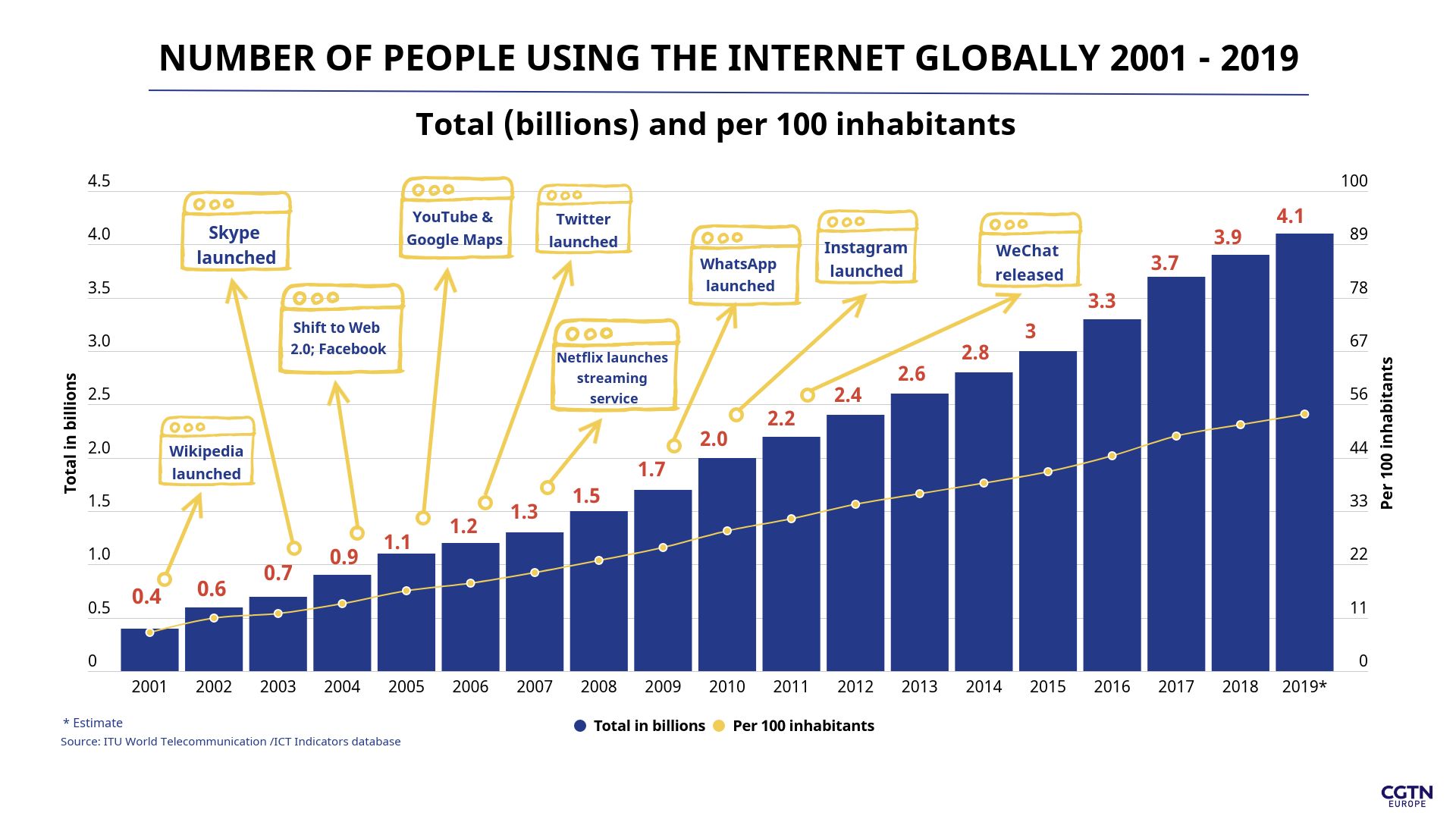
Where are we now?
Today, more than half of the world's population are internet users. So, yes, as shocking as it may be for some of us, just under half of the world's population does not currently have access to the internet, and for many it remains a luxury.
But for those of us who are privileged enough to have easy access to the internet, new developments have led to mobile broadband connections speeds ranging from 50 Mbps to over a gigabit per second (Gbps) with 5G technology.
For fixed broadband connections, the development of fiberoptic broadband has boosted connection speeds even further, with global average fixed broadband download speeds of more than 81 Mbps and the fastest speed in the world in Singapore at 213.18 Mbps as of July 2020, according to Speedtest by Ookla, which is the global leader in fixed broadband and mobile network testing applications, data and analysis.
Fiber optic broadband delivers much greater speeds because it uses fiber optic cables, instead of copper wire. Fiberoptic cables are composed from thin strands of glass that allow laser light to travel down them at literally the speed of light – vastly improving the speed that data can be sent and received.
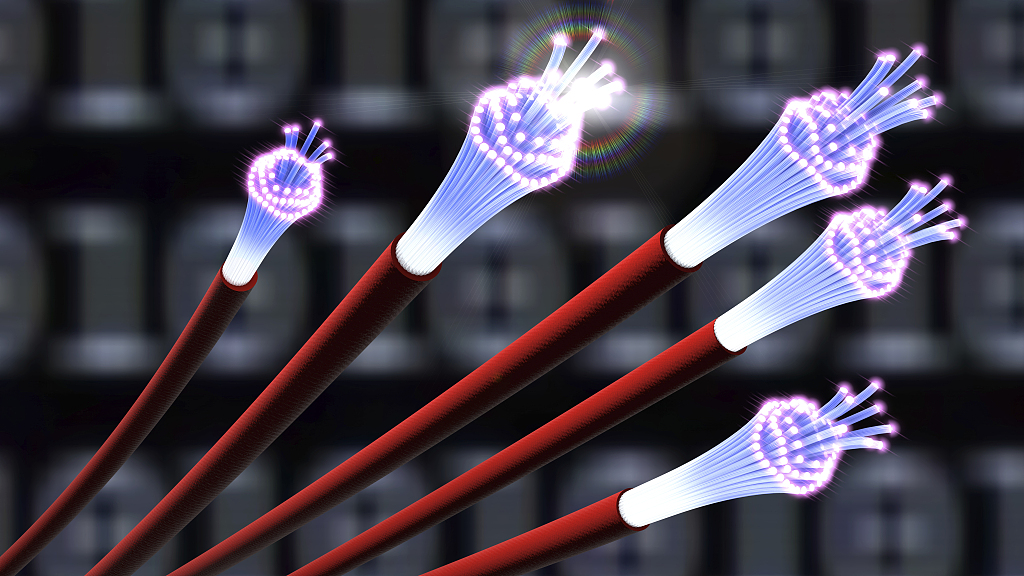
Optic fibers revolutionized internet speeds and continue to help develop new technologies. /Christoph Burgstedt/SCIENCE PHOTO LIBRARY/Getty via VCG
Optic fibers revolutionized internet speeds and continue to help develop new technologies. /Christoph Burgstedt/SCIENCE PHOTO LIBRARY/Getty via VCG
The research team at UCL which succeeded in achieving the world's fastest internet speed, advanced the research into these optical fibers.
"Optical fibers actually have a very wide bandwidth, which is why they've become ubiquitous in the transmission of information, but the available bandwidth is actually much larger, it's an order of magnitude larger, than the bandwidth that's currently used. And so working with our collaborators in Xtera, and some advanced research equipment, we've been able to use amplifiers, optical amplifiers, of a much wider bandwidth that's been previously used," Polina Bayvel said.
"We've also used a special way of shaping the information in order to alleviate some of the distortions that are encountered in transmission," she added.
But while these advances resulted in terabit per second speeds, they are confined to the labs of researchers and it may yet be some time before these lightning speeds reach us.
"So we're operating some way in advance. We're leading the industry, we're proposing the research direction. So there is some, of course, there's always going to be some delay between what we do here in the research lab and what is available in the field," Bayvel explained.
"As I said, the average in the UK is about 60 Mbps. The average I think in China is about 300 Mbps, maybe, a few hundred Mbps. If you pay, it's also possible to buy Gbps speeds. But the technology we're proposing is not a million miles away, it's not complicated technology. I think if the operators were willing to invest the money, it could be made available within a very short time," she added.
What does the internet of the future look like?
The outbreak of COVID-19 at the end of last year, highlighted the importance of the internet. As countries imposed lockdowns to control the spread of the virus, our lives quickly became more digitized while we were confined to our homes.
From remote working and never-ending video meetings, to e-learning and even virtual social gatherings and live-streamed exercise and cooking shows, it seemed we were all online, constantly.
With this came increased demand for bandwidth and faster speeds to avoid the internet cutting out in the middle of an important meeting or more embarrassingly, freezing unexpectedly while making a very unflattering pose.
"I mean, we've all been confined to the home and the usage of bandwidth has really increased significantly over this period. And somehow the digital infrastructure, the internet has been able to withstand those loads. But it's not seamless, you'd really like it to be faster and you would really like ubiquitous, fast, faff-free, flexible internet available to everyone at a push of a button," Bayvel said.
"The demand is increasing at a much faster rate than the capacities being installed," she explained, advocating for the need to expand on and further progress research and development in optical communications.
"The future of the Internet depends on being able to deliver bandwidth when and where it's needed in the amounts it's needed with very low delay. And to achieve this requires research in a number of areas: in physics, in signal processing, in new fibers, in new lasers. And so there is some way to go, but it's very exciting because our lives are digital and we need to respond by being able to provide the technology to allow our digital lives to evolve and not limit us in any way," said Bayvel.

Futuristic-sounding applications such as remote surgeries could become possible with the internet of the future. /VCG
Futuristic-sounding applications such as remote surgeries could become possible with the internet of the future. /VCG
Increasing internet speeds and making both fixed and mobile broadband cheaper and more accessible could help solve many problems.
"There are applications we haven't thought of. And it's not entertainment, we often say, well, ok, Netflix in a second, but it's not about that. It's every aspect of life, it's education, it's medicine, it's treatment, remote treatment, remote surgery,” Bayvel explained,“But you need to have very good and very high bandwidth and very, very low delays before that becomes a reality. So in my group, this is what we're working towards."
So it is possible that the next iteration of the internet, powered by 5G and multicore optical fibers could make futuristic-sounding applications such as surgery performed remotely in real-time or holograms taking our place in the office, a reality in the future.
"Optical communications and communications in general is a strategically very important research area, because it underpins strategically important capability for every nation in the world," Bayvel said.
But while the internet may have come a very long way since the snail-paced Kbps speeds some of us struggled with through dial-up, according to scientists, there's still a long way to go yet.
"What will the Internet of the future look like? We need to think about it now and not just wait and say, 'well, let's wait and see how things evolve.' This is absolutely imperative. A digital infrastructure is critical to people's lives."